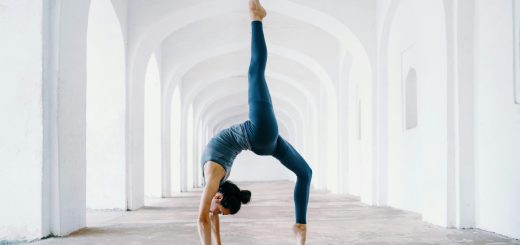Breathing Bliss: Exploring Pranayama Techniques for Well-Being

Before diving in, please note: This post is for informational purposes only. If you’d like to know more about how we approach topics, feel free to check out our friendly Disclaimer Page.
Hey there, amazing readers! 🖐️ Just a quick note: yes, we know there are a lot of ads here. Trust us, we get it—it’s not the prettiest look, but they help us keep this blog alive and kicking. Those pesky little ads cover the costs of all the behind-the-scenes magic, from hosting and tech stuff to creating content we hope you’ll love.
We’re committed to delivering quality posts, and your support (even just sticking around despite the ads) means everything to us. So, bear with us, and thanks for helping us keep the good vibes rolling. Now, on to the fun stuff! 😉
TRANSLATE BUTTON AT THE END OF THE ARTICLE
Overview: The Power of Pranayama Techniques
Breathing is an essential aspect of our existence, but did you know that it can be harnessed to improve our overall well-being?
Pranayama, a technique derived from ancient yogic practices, focuses on controlling and manipulating the breath to achieve physical, mental, and spiritual benefits.
In this article, we will explore the various pranayama techniques that can help you achieve breathing bliss and enhance your overall well-being.
What is Pranayama?: Understanding the Basics
Pranayama is a Sanskrit term that combines two words – "prana" and "ayama." "Prana" refers to the life force or vital energy that sustains every living being, while "ayama" means control or expansion.
Pranayama, therefore, translates to the control and expansion of life force through breath control.
The practice of pranayama involves conscious regulation of breath by manipulating its rhythm, depth, and duration.
By doing so, practitioners aim to balance the energy flow within the body, calm the mind, and promote physical and mental well-being.
The Benefits of Pranayama for Overall Well-Being
Pranayama offers a myriad of benefits that can positively impact our overall well-being.
Regular practice of pranayama techniques has been found to reduce stress, anxiety, and depression.
It promotes relaxation, improves focus, and enhances mental clarity.
Additionally, pranayama can strengthen the respiratory system, increase lung capacity, and improve oxygenation of the blood, leading to increased vitality and energy levels.
Furthermore, pranayama techniques have a positive impact on the autonomic nervous system, helping to regulate blood pressure, heart rate, and digestion.
They can also stimulate the parasympathetic nervous system, promoting the body’s relaxation response and aiding in the management of chronic pain and insomnia.
Exploring Different Pranayama Techniques
There are numerous pranayama techniques, each with its own unique benefits.
Let’s explore some of the most commonly practiced pranayama techniques:
Anulom Vilom: The Alternate Nostril Breathing Technique
Anulom Vilom, also known as Nadi Shodhana, is a balancing pranayama technique that involves alternating breath through the nostrils.
This technique helps harmonize the flow of energy in the body, calms the mind, and improves focus.
It is particularly useful for reducing stress and anxiety.
To practice Anulom Vilom, sit comfortably and close your eyes.
Close your right nostril with your right thumb and inhale deeply through your left nostril.
Pause briefly, then close the left nostril with your ring finger and exhale through the right nostril.
Continue this alternate breathing pattern for several rounds, focusing on slow and smooth breaths.
Kapalabhati: The Skull Shining Breath Technique
Kapalabhati is a dynamic pranayama technique that involves forceful exhalations and passive inhalations.
It is known for its cleansing and energizing effects on the body.
Kapalabhati helps clear the respiratory system, stimulates digestion, and increases mental alertness.
To practice Kapalabhati, sit with your spine erect and close your eyes.
Take a deep inhalation, and then forcefully exhale through your nose, using your abdominal muscles to push the breath out.
Allow the inhalation to happen passively.
Repeat this rapid exhalation-inhalation cycle for 20-30 rounds, gradually increasing the speed as you become comfortable.
Ujjayi: The Victorious Breath Technique
Ujjayi, often referred to as the oceanic breath, is a pranayama technique that involves creating a soft hissing sound during breath control.
This technique enhances concentration, calms the mind, and brings clarity to the thoughts.
Ujjayi also warms the body and balances energy levels.
To practice Ujjayi, sit in a comfortable posture and relax your body.
Close your eyes and inhale deeply through your nose.
As you exhale, slightly constrict the back of your throat, creating a gentle hissing sound.
Maintain this constriction throughout the inhalation and exhalation process.
Focus on the sound and the sensation of the breath moving in and out.
Bhramari: The Bee Breath Technique
Bhramari is a calming pranayama technique that involves making a humming sound during exhalation.
It helps relieve stress, anxiety, and anger while promoting a sense of inner tranquility.
Bhramari also enhances mental focus and improves sleep quality.
To practice Bhramari, sit comfortably and close your eyes.
Place your index fingers gently on your ears, closing the ear canals.
Take a deep breath in, and as you exhale, make a humming sound like that of a bee.
Continue for several rounds, focusing on the vibration and the calming effect it brings to your mind and body.
Sheetali and Sheetkari: The Cooling Breath Techniques
Sheetali and Sheetkari pranayama techniques involve inhaling cool air through the mouth and exhaling through the nose.
These techniques help cool the body and reduce body temperature.
They are beneficial in hot climates, during periods of high stress, or when experiencing excessive anger or frustration.
To practice Sheetali, sit comfortably and relax your body.
Curl your tongue lengthwise, sticking the tip out of your mouth.
Inhale deeply through the curled tongue, feeling the coolness of the breath.
Close your mouth and exhale through your nose.
Repeat for several rounds.
To practice Sheetkari, sit in the same posture and close your mouth.
Place your teeth together, and slightly separate your lips.
Inhale deeply through the gaps between your teeth, feeling the coolness of the breath.
Close your eyes and exhale through your nose.
Repeat for several rounds.
Dirga Pranayama: The Three-Part Breath Technique
Dirga Pranayama, also known as the three-part breath, involves deep inhalations and exhalations that expand the breath into three parts – the lower belly, the ribcage, and the chest.
This technique promotes deep relaxation, reduces anxiety, and expands lung capacity.
To practice Dirga Pranayama, sit comfortably and close your eyes.
Place your hands on your abdomen and take a slow, deep inhalation, expanding your belly.
Continue the inhalation, allowing the breath to fill your ribcage and then your chest.
Exhale slowly, releasing the breath from the chest, ribcage, and abdomen.
Repeat for several rounds, focusing on the expansion and relaxation of each breath.
Nadi Shodhan Pranayama: The Channel Cleansing Breath Technique
Nadi Shodhan Pranayama, also known as alternate nostril breathing, is a balancing and purifying technique that helps harmonize the flow of energy in the body.
It promotes mental clarity, reduces stress, and balances the left and right hemispheres of the brain.
To practice Nadi Shodhan Pranayama, sit comfortably and close your eyes.
Place your left hand on your left knee, with your palm facing up.
Close your right nostril with your right thumb and inhale deeply through your left nostril.
Pause briefly, then close the left nostril with your ring finger and exhale through the right nostril.
Inhale through the right nostril, close it with your thumb, and exhale through the left nostril.
Repeat this pattern for several rounds, focusing on the smooth flow of breath.
Sitali Pranayama: The Cooling Breath Technique
Sitali Pranayama is a cooling breath technique that involves inhaling air through a rolled tongue.
It has a calming effect on the nervous system, reduces stress, and helps lower body temperature.
Sitali is particularly beneficial in hot climates or during times of excessive heat in the body.
To practice Sitali Pranayama, sit comfortably and relax your body.
Roll your tongue lengthwise to create a tube-like shape.
Inhale deeply through the rolled tongue, feeling the coolness of the breath.
Close your mouth and exhale through your nose.
Repeat for several rounds.
Conclusion: Integrating Pranayama for Lifelong Well-Being
Pranayama techniques offer a powerful tool for achieving overall well-being.
By incorporating these techniques into your daily routine, you can experience the benefits of improved mental clarity, reduced stress, enhanced focus, and increased energy levels.
Experiment with different pranayama techniques to find the ones that resonate with you the most, and make it a habit to practice them regularly.
With consistency and dedication, pranayama can become a lifelong practice that contributes to your physical, mental, and spiritual well-being.
So, take a deep breath and embark on the journey of breathing bliss through pranayama.

The Enlightenment Journey is a remarkable collection of writings authored by a distinguished group of experts in the fields of spirituality, new age, and esoteric knowledge.
This anthology features a diverse assembly of well-experienced authors who bring their profound insights and credible perspectives to the forefront.
Each contributor possesses a wealth of knowledge and wisdom, making them authorities in their respective domains.
Together, they offer readers a transformative journey into the realms of spiritual growth, self-discovery, and esoteric enlightenment.
The Enlightenment Journey is a testament to the collective expertise of these luminaries, providing readers with a rich tapestry of ideas and information to illuminate their spiritual path.
Our Diverse Expertise 🌟
While our primary focus is on spirituality and esotericism, we are equally passionate about exploring a wide range of other topics and niches 🌍📚. Our experienced team is dedicated to delivering high-quality, informative content across various subjects ✨.
To ensure we provide the most accurate and valuable insights, we collaborate with trusted experts in their respective domains 🧑🏫👩🏫. This allows us to offer well-rounded perspectives and knowledge to our readers.
Our blog originally focused on spirituality and metaphysics, but we’ve since expanded to cover a wide range of niches. Don’t worry—we continue to publish a lot of articles on spirituality! Frequently visit our blog to explore our diverse content and stay tuned for more insightful reads.





